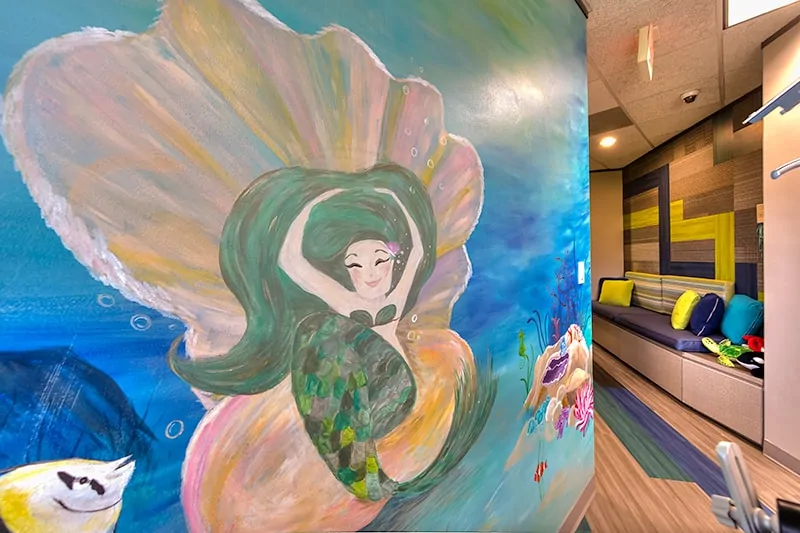
You may have heard of dentists using lasers to treat soft tissue problems. But have you ever heard of a laser being used to numb teeth? Ours can – and much more!
The laser our Growing Great Grins doctors use is extremely versatile. Because it can be used at varying settings, it can work on soft tissue like your gums, frenums, and the pulp, and hard tissue like your teeth. This means we can use it for fixing cavities and also for soft tissue procedures like frenectomies or gum contouring. But the very best thing lasers let us do is avoiding analgesic shots. That’s right! With lasers, we can almost always eliminate Novocain.
So how is that better than a Novocain shot?
The truth is, to lots of children, the SHOT is the worst part of the dental experience, even though it is the thing that ultimately stops the pain. It causes stress and sometimes, just the anticipation of the shot makes dentistry an anxiety-filled experience. Plus, it feels weird! Now, with the laser, what used to be miserable becomes an adventure!
Here’s how it works:
Lasers may sound like a fantasy but there is no wizardry involved. It’s all physics!
Let’s get technical: Lasers use a light frequency of 2780 nM. At this frequency, energy photons are
1. attracted to water and
2. hydroxyapatite, the organic matrix of tooth structure.
This natural attraction allows us to set the laser to deliver controlled bursts of photons to several possible places:
Additionally, it may also have other biochemical effects which can promote the health of the tooth
Even if you didn’t understand all of that, it’s pretty clear that lasers make dental care much better for kids of all ages and stages. Why not ask us for a demonstration the next time you are visiting the dentist in our Woodlands pediatric office? Or click here to read more about what lasers can accomplish – zip, zap, zoom!